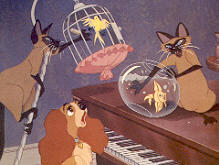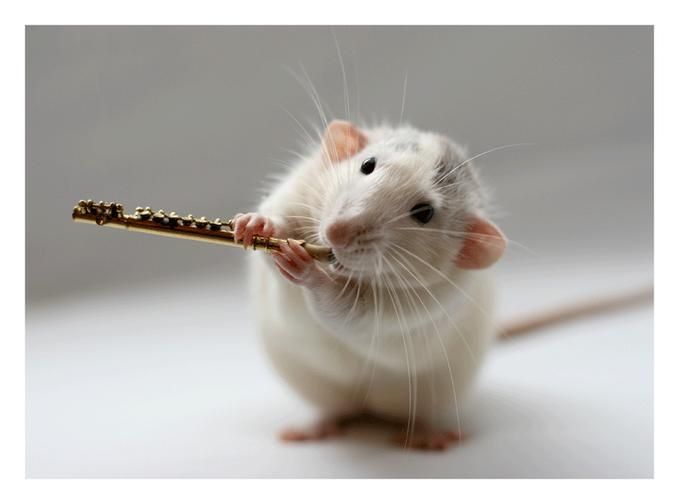
Romantic Music @ Amazon Books
Chapter 2, Shadow and stimulus: the move away from Classicism
It is a good deal easier to proclaim that the galant and Classical masters were not primarily Romantics than it is to distinguish what is Romantin in their music from what is not. There are nevertheless certain unmistakable signs of features too disruptive, or too imprecise, to be suitable for full exploitation within Classicism itself. Reference has already been made to the empfindsamer Stil of C.P.E. Bach's fantasias and sonatas for keyboard, and to Haydn't symphonic Sturm und Drang. There is also an undeniable continuity between the often remarkably progressive and powerfully expressive dramatic manner of late Baroque and early Classical accompanied recitative and the tendency towards more continuous lyric melody of much Romantic opera. Perhaps the most striking feeling of proto-Romantic upheaval comes in the stormier passages of Gluck - like the finale of the ballet Don Juan (1761) - and, later, in the more overtly melancholy or turbulent movements by Mozart. There is of course abundant turbulence in Mozart's 'Don Juan' - the opera Don Giovanni - although his symphonic works in minor keys are models of an inextricable fusion of deep feeling and Classically controlled poise.
Beethoven's description of his piano sonatas op. 27 as 'Quasi una fantasia' may, with hindsight, be interpreted as the most transparent Classical declaration of anti-Classical intent, a conscious challenge to the aesthetic priorities of the Age of Reason. Beethoven's evident desire to try out new formal schemes and modes of expression in these two sonatas, composed in 1800-01, was an important step on the road to his visionary later masterpieces - especially teh Diabelli Variations and the last five string quartets - which struck such awe into his successors, not least because they embody so enigmatic an interaction between two opposing tendencies: powerfully integrated, large-scale symphonic structures, and intense, self-contained miniatures in which the desire for authentic, individual expression seems to override the need to contribute obediently to a larger whole. Such vital foreshadowings of Romanticism were not the exclusive preserver of Germany and Austria, of course. Paris was an important musical centre, and, as will soon become apparent, French music of the revolutionary period had a direct and fundamental role in the generation and development of Romantiticism in Europe as a whole. Nevertheless, this narrative will begin with the Austro-German composers closest in time and place to the Classical masters, and in whom the evidence of movement away from the purest Classical principles is most apparent - Carl Maria von Weber (1786-1826) and Franz Schubert (1797-1828).
In both composers there is a fundamental change of emphasis, however strongly they may in some respects continue to reflect a commitment to the 'traditions' of the immediate past. For example, a song from Schubert's Die scho:ne Mu:llerin (1823) - Die liebe Farbe - is a fine instance of that restrained yet profound melancholy, introspective yet universal, which is an archetypal early Romantic quality. Classical melancholy has a stronger 'specific gravity': for example, in Pamina's aria 'Ach, ich fuhl's' from Die Zauberflo:te there is certainly more gravity, even a touch of Gluckian formality which, as in Gluck himself at his best, focuses the intensity of the expression rather than draining it away. With Schubert's greater musical simplicity goes greater potential instability - in the alternation of major and minor harmony, in the alternation of four- and five-bar phrases. Yet mood and method alike are precise and clearly outlined. While in all senses less 'substantial' than the Mozart aria, Die liebe Farbe is no less compelling a representation of a living mood.
For the complementary state of mind, we might instance the serenity of Agathe's area 'Leise, leise' from Weber's Der Freischu:tz. Compared with the finest examples of Classical serenity - the slow movements of Mozart's concerto and quintet for clarinet, for example - there is again a sense of lesser substance, a relative lightness, touching and completely satisfying in its own terms, but something indicating the early stages of an artistic movement rather than the highest achievements of its richest phase. Weber's greatness is to make us forget such sober historical calculations so frequently. Yet it is perhaps when both Weber and Schubert explore more turbulent, disturbed emotions - the Wolf's Glen scene from Freischu:tz, the Heine setting Der Atlas that the strengths of the new forms of expression are most obviously apparent. Of course, the game of (p18) comparison can still place them at a disadvantage, as calling to mind any of the more titanic episodes from Beethoven's works will suggest. The fact remains that these and other examples of emotions in turmoil in early Romantic music offer the clearest indications of where the most exciting and far-reaching developments would take place in the later, wholly Romantic masters, while remaining supremely powerful and absorbing musical experiences in their own right.
In December 1824 Weber's Der Freischu:tz was performed (as Robin des Bois) in Paris: 'Not the real thing, but a gross travesty, hacked and mutilated in the most wanton fashion by an arranger.' The comment is that of Berlioz, who declared that 'even in this raveged form there was a wild sweetness in the music that I found intoxicating'. This tribute from one Romantic to another is expressed in appropriately Romantic terms, down to inclusion of one of Dr. Johnson's adjectives - 'wild'. And it ties in neatly with the memory of another great Romantic. Wagner recalled his mother introducing him to Weber at the age on nine in 1822 with the memorable diagnosis that 'while I was wild about Der Freischu:tz, she had nevertheless noticed nothing in me that might suggest a talent for music'. Wagner's belief in his own talent also led him to write at length elsewhere about Weber's 'serious error', that 'pious faith in the omnipotence of pure melody', which prevented him from furthering the development of true music drama as determinedly as Wagner himself was eventually able to do.
It is often the case that composers who are regarded by critics of their own time as dangerously radical will be viewed by those of later generations as insufficiently adventurous. In Weber's case, even his fellow composers seem to have conformed to critical convention. Schubert preferred Der Freischu:tz (1821) to the later, more advanced Euryanthe (1823), complaining of the latter that whenever a scrap of tune appears, it is crushed like a mouse in a trap by the weighty orchestration'. For Wagner, thirty years after Schubert, the problem with Euryanthe was too much tune rather than too little, and the work is a 'true and beautiful success only where, for love of truth, he quite renounces absolute melody, and - as in the opening scene of the first act - gives the noblest, most faithful musical expression to the emotional dramatic declamation as such'.
p39
That new world was strongly indebted to developments in 'piano technology', as the instrument itself continued to evolve into the modern concert grand, and public demand for displays of virtuosity remained buoyant. Schumann's own traumatic experiences as a would-be virtuoso are well known, although it is far from certain whether the finger problems which afflicted him in 1832 were the result of the notorious 'mechanical device' or of mercury poisoning, a consequence of treatment for syphilis. Schumann was not concerned to make his own piano music easy to play, and yet his evident and consistent contempt for the shallow pyrotechnics of those executants based mainly in Paris - Kalkbrenner, Herz, Hunten, Do:hler, Bertini and co. -must have provided him with the clearest possible sense of what he wished to avoid in his own compositions. So sensitive were Schumann's critical antennae that he was able to distinguish between the potential evident in an apparently conventional display piece like Chopin's op. 2 Variations on 'Là ci darem la mano' and a typically vacuous effusion from a minor figure. He was also able to find virtues in Liszt and Thalberg which raised them above the level of the cliché-ridden productions of the common herd. Nowhere is Schumann's sense of the superiority of German to French or Italian music more evident than in his criticisms of pianistic trash. Yet it is his own mode of piano writing in the 1830s which provides the most telling criticism, for the purely technical challenge is always subordinate to an expressive end, whether delicate or dramatic. There was, in any case, more to his belief in German superiority than this, for dissatisfaction with empty display in the music of other countries was carried over into what he saw as the more serious failure to exploit those larger instrumental forms in which Beethoven and Schubert had been so evidently at home.
Schumann's annus mirabilis was 1840, when a lyric muse that had triumphed in the evocations and allusions of the piano works suddenly confronted, and conquered, the lyric texts of Heine, RÜckert, Eichendorff and others. With hindsight, that year's achievement seems to embody a productivity born either of sheer desperation or a passionate belief that it was time to move on to the mainstream of symphonic and operatic composition, and that as much small-scale work should therefore be completed while it was still possible. There can be no doubt that the great song-cycles of 1840 - the Liederkreis op. 39 and Dichterliebe poems stand back from even the degree of skeletal narrative found in Die schÖne MÜllerin and Die Vinterreise. They deal with feelings in a landscape.
Romantic Music, A concise history from Schubert to Sibelius, Arnold Whittall.



